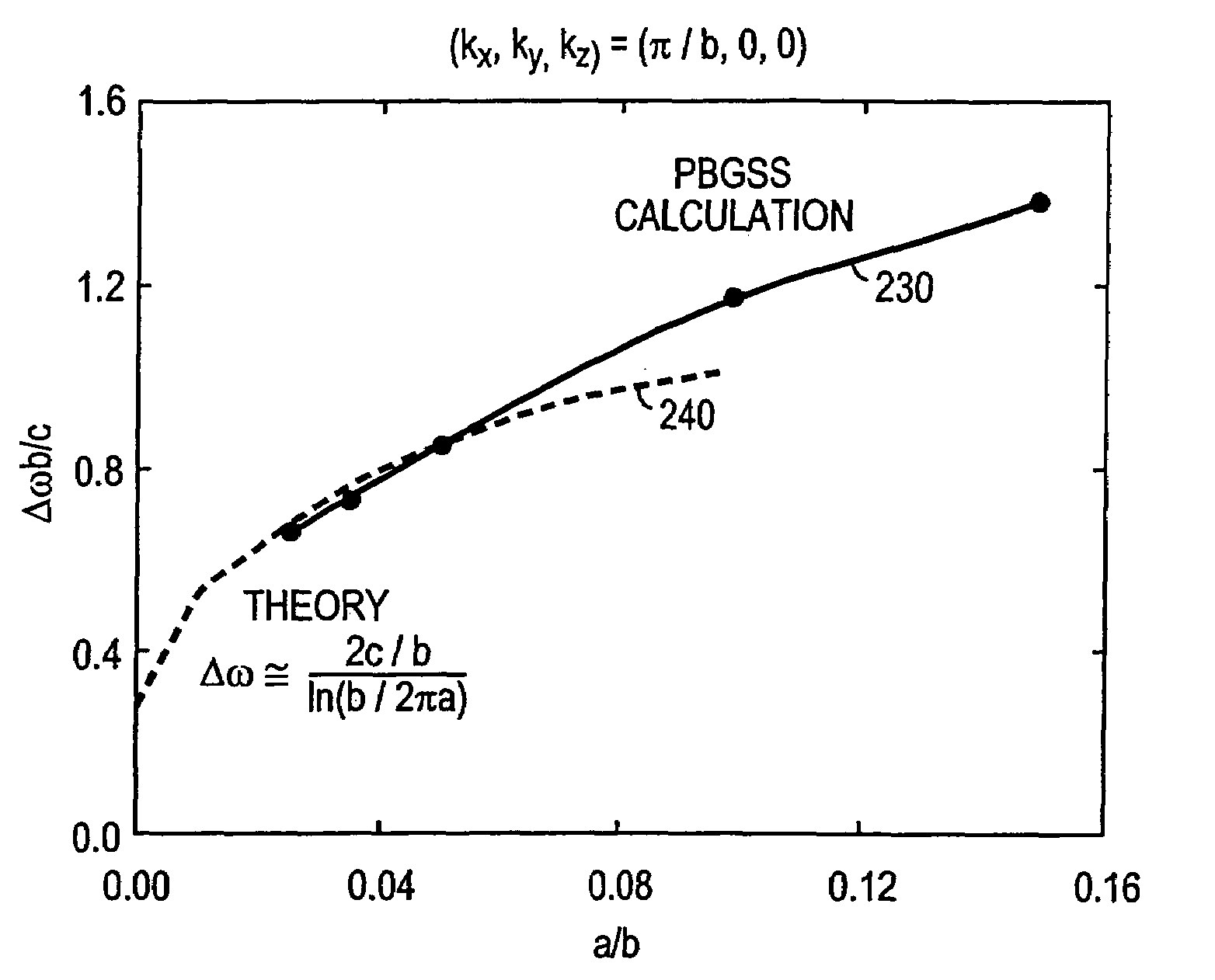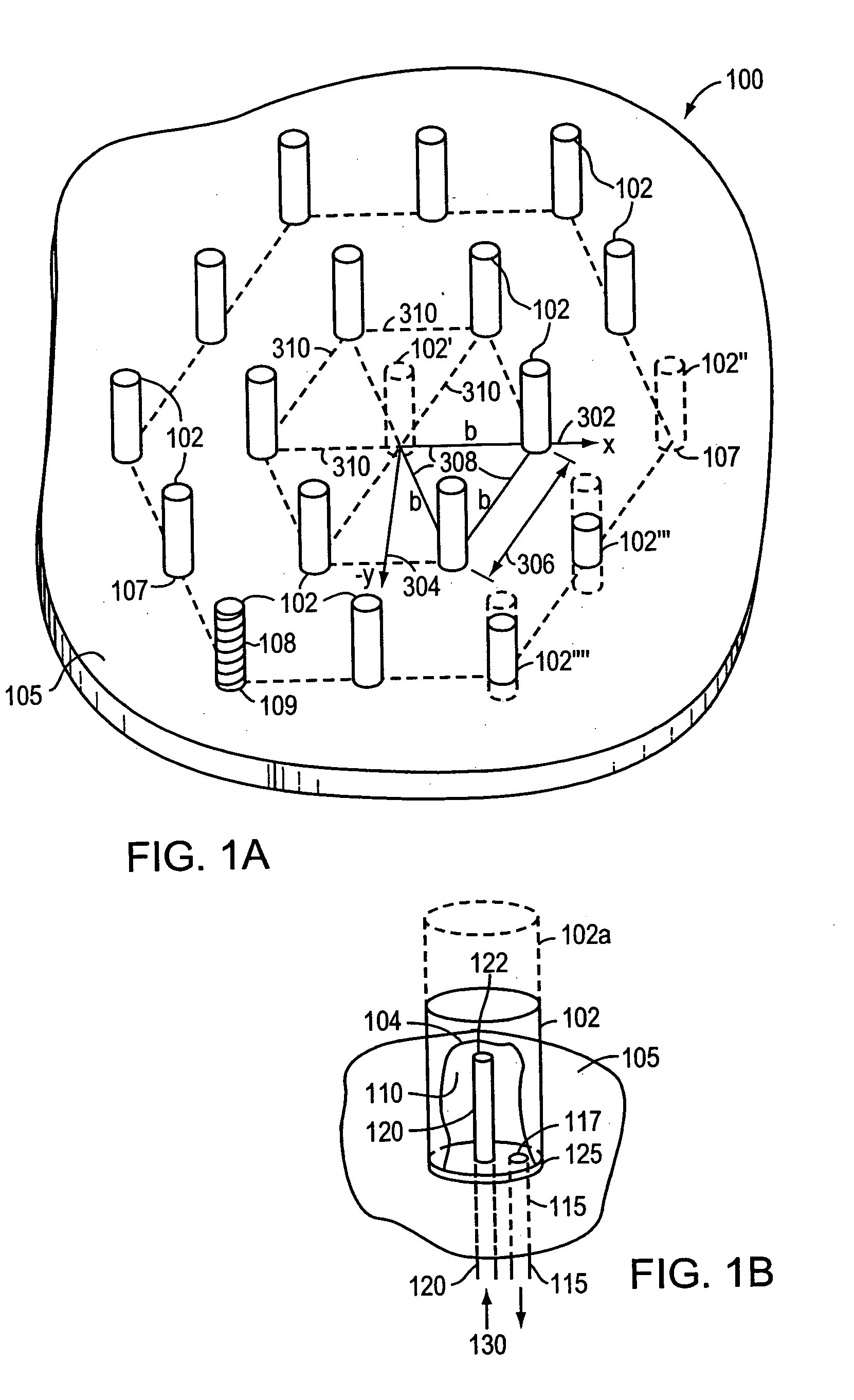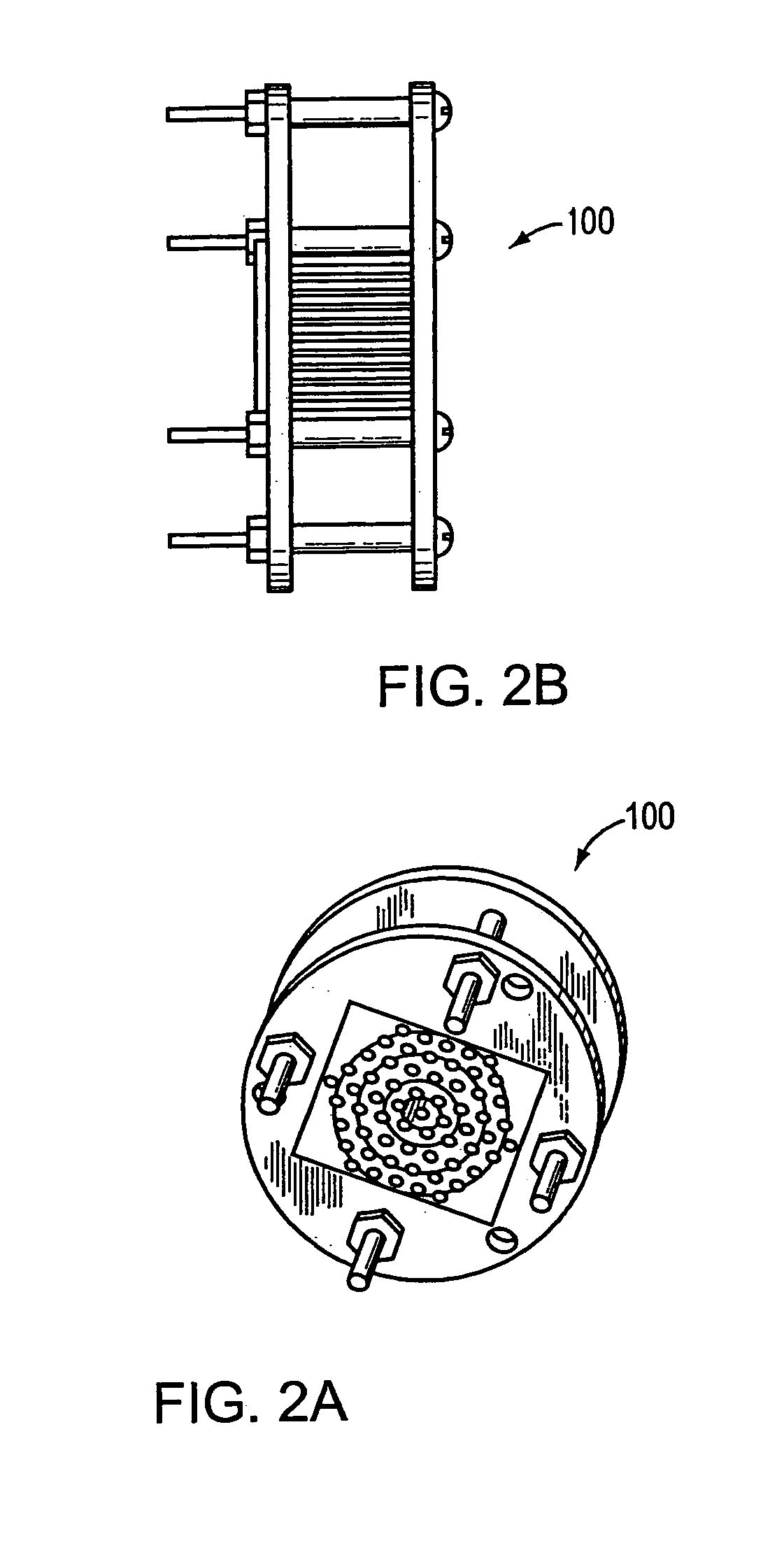Photonic band gap structure simulator
a technology of gap structure and photon, applied in the field of photon and modeling electronic structures, can solve the problems of not being able to easily determine the appropriate structure or structure for use in a particular situation, not having a convenient system or method, and not being able to perform the necessary calculations in time, so as to achieve the effect of facilitating operation
- Summary
- Abstract
- Description
- Claims
- Application Information
AI Technical Summary
Benefits of technology
Problems solved by technology
Method used
Image
Examples
Embodiment Construction
[0040]A brief description of a vacuum electron device having a PBG structure, based on the disclosure in the '661 application, is presented as introductory material to acquaint the reader with the features of PBG structures. The description of the systems and methods used to perform simulations useful in designing and analyzing such PBG structures follows.
[0041]A PBG structure, which is a periodic array of spatially varying dielectric or metallic structures (or combinations of metallic and dielectric structures), was first described by Yablonovitch. In recent years, numerous advances have improved the understanding of the theory of PBG structures. This has led to new applications in passive devices for guiding and confinement of electromagnetic radiation. The use of PBG structures in both microwave and optical devices has primarily been limited to passive devices such as waveguides and filters, though some applications in active devices have been reported.
[0042]FIG. 1A is a drawing ...
PUM
 Login to View More
Login to View More Abstract
Description
Claims
Application Information
 Login to View More
Login to View More - R&D
- Intellectual Property
- Life Sciences
- Materials
- Tech Scout
- Unparalleled Data Quality
- Higher Quality Content
- 60% Fewer Hallucinations
Browse by: Latest US Patents, China's latest patents, Technical Efficacy Thesaurus, Application Domain, Technology Topic, Popular Technical Reports.
© 2025 PatSnap. All rights reserved.Legal|Privacy policy|Modern Slavery Act Transparency Statement|Sitemap|About US| Contact US: help@patsnap.com



